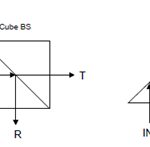
Photonics 101- Understanding Beam Splitters
Friday, 23 December, 2016
Optical Filter Manufacturers
Friday, 23 December, 2016Lenses are probably the first thing people associate with precision optics – but what kind of lenses? The simplest lenses consist of one piece of glass and are called, appropriately enough, singlets. A singlet has two optical surfaces, surrounded by an edge surface with a protective bevel. Those optical surfaces can be flat (“plano”), convex, or concave. The plano-convex lens (PCX) focuses light. The plano-concave lens (PCC or PCV) diverges or spreads light. Other configurations include bi-convex (BCX), bi-concave (BCC or BCV), and meniscus (having one concave and one convex surface.) Lenses with one plane surface are generally less expensive.
Aberrations
All lenses with spherical curves have some residual aberrations. These aberrations can be minimized by choosing appropriate curves on each side, according to the positions of the focal points. Aberrations can be further reduced by combining lenses in such a way that their aberrations balance. Chromatic aberrations (color fringes) can be reduced by combining two or more lenses made of different glass types; these lenses are called achromats. A doublet consists of two singlets which may be air-spaced or cemented together. A triplet consists of three lenses, and some situations call for even more surfaces.
Choice of glass types
There are hundreds of different optical glass types. Most are highly transparent to visible light, but you may need to transmit into the ultraviolet or infrared. Other important properties of glass include its rate of thermal expansion, its resistance to staining and scratching, its cost and availability, and how it balances chromatic aberrations with another glass type.
Specifications
To be certain you’ll get what you need, a lens prescription should include these factors: Radii, center thickness, diameter, surface form accuracy, centration (wedge), anti-reflection coating at the required wavelength(s), and tolerances on all of those plus surface quality, and glass type and grade.
Working with a reputable precision optics manufacturer
It is important to consult with a knowledgeable professional to make sure you get the right prescription at the appropriate quality level. Cost can be strongly affected or performance seriously degraded by incorrect specifications. Tower Optical’s sales engineers can guide you through the process. Please contact us.



